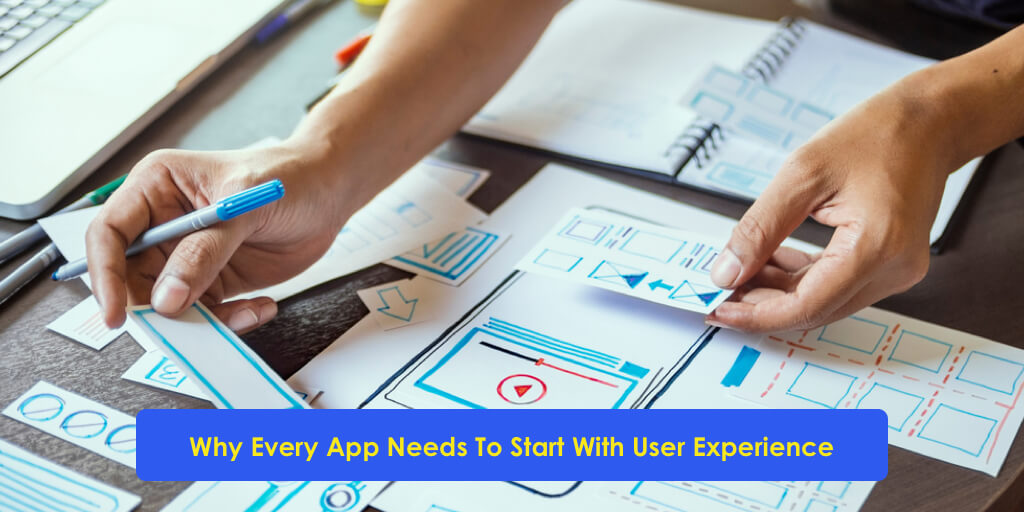Have you ever bought a piece of furniture that needed to be assembled?
Or maybe had a toy that required being put together?
We’ve all been there at one point or another.
As long as you follow the directions, everything goes the way you expect. But when you skip a step or make a mistake, there’s always a point where you realize something isn’t right. Maybe the legs on a chair aren’t the same height, or your Lego train won’t fit on its track. Whatever it may be, you know it needs to be fixed.
Skipping or leaving out user experience (UX) design when building an app causes the same feeling. It may look right, but something is definitely wrong. A lot of organizations—and quite a few app developers—think they can save money and time by neglecting UX design and jumping straight into coding. But what they’re really doing is reducing the odds their app will be liked by the people who matter: their audience.
Form and Function Don’t Always Get Balanced
Architects, manufacturers and artists are all familiar with the phrase “form follows function.” It means that what you create should first solve the problem it’s intended to address. We can worry about how it looks later.
While that seems to make practical sense, it’s never a good idea to leave thoughts about visual design and your primary user’s experience until the end of your process. Doing so will set you on a path to creating an app that isn’t user-friendly. And since budgets are always an issue, there’s a chance these parts of the design process will be left out completely.
A better way to approach app design is to start with the user first. Once you understand who they are, what they need, and what makes them happy, you can build a framework for an app they’ll never want to close.
User Experience (UX) Design Explained
So what exactly is user experience design?
It’s a process for aligning the purpose of an app with the interests of its audience. Think of it this way: a business owner may believe it’s important to include every aspect of an online service in an app for every type of customer. But after doing this, the app will have so many menus it will be hard for users to find what they need.
User experience design determines what users need and expect, then finds a way to package the experience so it is as intuitive as possible. It can also include some psychological techniques that encourage users to keep coming back, in addition to some nudges to get them to share the app with their friends.
UX helps narrow the focus of what should be included in an app and what can be left out. But when UX is missing, you can see and feel how the result was designed for someone else’s needs and not your own.
How UX is Different From User Interface (UI) Design

Many organizations try to combine these roles as UX/UI design, but they’re two completely different areas of expertise. A UX designer is focused on research, strategy, psychological influences, and how an app flows from the home screen to every page that follows.
User interface designers are like graphic designers. They decide what colors to use, how to create the layouts for each screen, make typography determinations, and edit images for all the layouts.
Another way to think about the relationship of these two roles is to consider a strategist versus a technician. The UX strategist determines the best course of action to take, while the UI technician makes the product. This doesn’t mean one position is better than the other. They must work together to create a product that users enjoy.
The Tools of UX Design

Since it’s clear now that user experience designers are not creating the final user interface, it’s worth looking into what they do make. The following list is not comprehensive, but will give you a clearer picture of the UX design process.
Focus Groups and Surveys: The only way to understand an audience is to interact with its members. Conducting research allows UX designers to learn the motivations and needs of an audience before any code or strategies are developed. This is a crucial step in the app development process.
Wireframes: These help UI designers and developers understand what they’re being asked to create. They are simple app mock-ups that are often animated and interactive. Everyone involved in a project can see the key functionality of an app and how a user will move through the finished version. Wireframes are quick and inexpensive to create, so multiple versions are typically created so teams can decide what direction to take.
A/B Testing: This is an efficient form of research that allows UX designers to test how design changes affect user behavior and preferences. For example, this process eliminates the need for designers to guess what colors to use or where to place buttons in apps. This translates to apps functioning as expected the day they are released, instead of discovering problems after all work has been completed.
Usability Testing: Similar to A/B testing, UX designers observe how users interact with an early version of an app to see if they have any problems or get confused moving through it. If any patterns are found, the app will be adjusted and tested again until all issues are resolved.
Blue Whale Apps Seamlessly Blends UX and Technology
Blue Whale Apps will ensure your app is a pleasure to use and smoothly incorporates the latest technologies, such as augmented reality, machine learning and blockchain.
Our team can handle all parts of the development process, from reviewing where you are now, to making and implementing a plan for where you want to go. We specialize in end-to-end development for Fortune 1000 businesses and government agencies, including consulting, branding, UX design and hand-crafted code.
Recent projects have included apps within the healthcare, technology, public utilities, entertainment, retail, consumer products and automotive industries. And last year, Blue Whale Apps was named the #1 Mobile App Developers by AppFutura, Clutch, and Good Firms in 2019.
Blue Whale Apps’s UX design experts can work with you to transform your strategic digital capabilities and build customer experiences that are simpler and clearer, increasing your growth potential.
Blue Whale Apps Development Creative Design Services
Do you want to build Ad-Tech platform or develop custom one from scratch, Blue Whale Apps’ creative team can help you conceptualize, strategize, design and develop your web and mobile applications.









